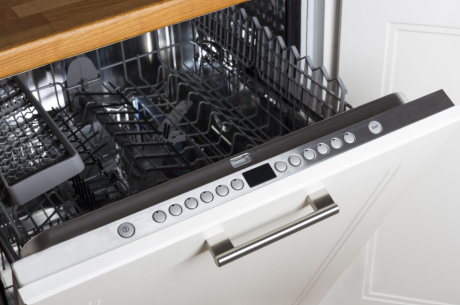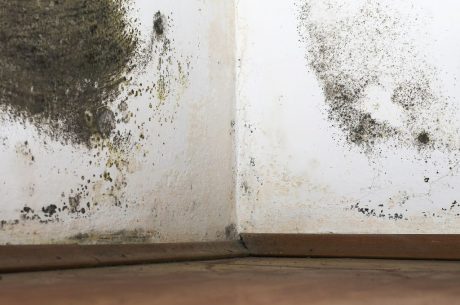Table of Contents
Fixing mold during Maine Summers
Maine is known for its picturesque landscapes, cool coastal breezes, and crisp winters. But when summer arrives, the state can experience hot, humid conditions that create the perfect environment for mold growth. Mold thrives in damp, warm areas, and if left unchecked, it can damage your home and pose health risks to you and your family.
Fortunately, with the right strategies, you can prevent mold from taking hold in your home during Maine’s muggy summers. In this blog post, we’ll cover the causes of mold growth, the risks it poses, and practical steps to keep your home mold-free.
Why Does Mold Grow in Maine Summers?
Mold spores are always present in the air, but they need moisture and warmth to grow. Maine’s summer humidity—often exceeding 70%—creates ideal conditions for mold to flourish. Common sources of indoor moisture include:
- High outdoor humidity seeping inside
- Poor ventilation in bathrooms, kitchens, and basements
- Condensation on windows, pipes, and walls
- Leaks from roofs, plumbing, or foundations
- Damp clothing, carpets, or upholstery
Once mold finds a damp surface, it can spread quickly, often within 24-48 hours. Preventing mold requires controlling moisture and improving airflow.
Health Risks of Mold Exposure
Mold isn’t just unsightly—it can also cause health problems, especially for those with allergies, asthma, or weakened immune systems. Common symptoms of mold exposure include:
- Sneezing, coughing, and nasal congestion
- Skin irritation or rashes
- Watery or itchy eyes
- Worsening asthma symptoms
- Headaches and fatigue
Long-term exposure to toxic molds (like black mold, or Stachybotrys chartarum) can lead to more severe respiratory issues. That’s why prevention is key.
How to Prevent Mold Growth in Your Home
1. Control Indoor Humidity Levels
The EPA recommends keeping indoor humidity between 30-50% to prevent mold growth. Here’s how:
- Use a dehumidifier – Especially in basements, crawl spaces, and other damp areas.
- Run air conditioners – AC units not only cool the air but also remove moisture.
- Monitor humidity – A hygrometer (available at hardware stores) can help you track levels.
2. Improve Ventilation
Stagnant air traps moisture. Increase airflow with these tips:
- Use exhaust fans in bathrooms and kitchens to remove steam.
- Open windows when outdoor humidity is lower (early morning or late evening).
- Install vent fans in attics and crawl spaces to reduce trapped moisture.
3. Fix Leaks and Seal Cracks
Even small leaks can lead to big mold problems. Regularly inspect:
- Roofs and gutters – Ensure water drains away from your home.
- Plumbing – Check under sinks, around water heaters, and near washing machines.
- Foundation and walls – Seal cracks to prevent water seepage.
4. Dry Wet Areas Immediately
Mold grows fast on damp surfaces. Act quickly when spills or leaks occur:
- Wipe down showers and sinks after use.
- Dry wet carpets and upholstery within 24 hours.
- Use a wet/dry vacuum for larger water spills.
5. Choose Mold-Resistant Materials
If you’re renovating or building, opt for:
- Mold-resistant drywall and paint (especially in bathrooms and basements).
- Tile or vinyl flooring instead of carpet in high-moisture areas.
- Waterproof sealants on walls and floors.
6. Clean and Maintain HVAC Systems
Dirty air ducts and filters can spread mold spores. To prevent this:
- Change HVAC filters every 1-3 months.
- Schedule professional duct cleaning if you suspect mold buildup.
- Ensure drip pans are clean and draining properly.
7. Store Items Properly
Clutter can trap moisture. Keep your home organized by:
- Using plastic bins instead of cardboard boxes in basements.
- Elevating storage off concrete floors to prevent condensation absorption.
- Avoiding overpacking closets to allow air circulation.
8. Use Natural Mold Inhibitors
For a chemical-free approach, try:
- White vinegar – Spray on surfaces to kill mold spores.
- Tea tree oil – A natural antifungal (mix with water and spray).
- Baking soda – Great for scrubbing moldy areas.

What to Do If You Find Mold
Why DIY Mold Removal Isn’t Enough—Trust the Professionals
While small mold patches can sometimes be handled with household cleaners, DIY solutions often fail to address the root cause of mold growth—hidden moisture problems. Improper cleaning can even spread spores, making the problem worse. Worse yet, some molds (like toxic black mold) pose serious health risks and require specialized equipment to remove safely. That’s where a professional mold remediation company like ours comes in. We use industrial-grade HEPA filtration, antimicrobial treatments, and moisture detection tools to eliminate mold at its source—not just the visible signs. Don’t risk your health or your home’s integrity with temporary fixes. If you suspect mold, call our certified experts for a thorough, lasting solution.
For larger infestations, or if mold keeps returning, contact a professional mold remediation service. They can identify hidden moisture sources and safely remove mold.
Trust Our Professional Mold Remediation Services in Maine – (207) 531-1200
If you’re dealing with mold growth, don’t settle for a temporary solution. At our Auburn-based restoration business, we specialize in comprehensive mold remediation services. Our experienced team will thoroughly assess your property, contain the affected areas, and restore your space to a clean, safe condition.
We use advanced equipment and proven techniques to ensure the complete removal of mold and moisture sources. With our commitment to quality and customer satisfaction, you can trust us to handle even the most challenging mold problems.
We understand the importance of acting quickly to prevent further damage and ensure the health of your family or employees. Contact us today on (207) 531-1200 to schedule a mold inspection in Maine and experience the difference that professional mold remediation can make.
Final Thoughts
Maine summers bring warmth and beauty, but the high humidity during Maine summers also creates the perfect breeding ground for mold. Thankfully, with proactive measures tailored to Maine summers, you can keep your home safe and healthy.
By controlling humidity (a must during Maine summers), improving ventilation, fixing leaks, and maintaining clean living spaces, you’ll outsmart mold before it takes hold. Stay vigilant, act quickly when moisture creeps in, and enjoy a mold-free home—even in the stickiest of Maine summers!




 PuroClean of Auburn
PuroClean of Auburn